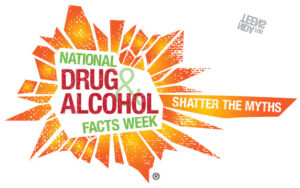
The internet, social media, television, movies, and music have a lot to say about drugs, alcohol, and addiction. Unfortunately, sometimes the message isn’t clear, and information doesn’t always deal in fact. The above trend may not seem like that big a deal until you consider the misconceptions that teenagers and young adults walk away with regarding substance use.
In the 21st Century, young people have access to more media outlets than ever before. Theoretically, it should lead to such people having a more informed grasp on any given subject. In just a few moments, one could learn all there is to know about drug and alcohol use on the internet. Television shows air programs that highlight the symptoms of mental illness and the risks of substance abuse. While it’s nice that there is now a lot of buzz about the above subjects, the information projected into the minds of youths is rarely science-based.
Again, talking about drugs, alcohol, substance use disorder, and mental illness is, without any doubt, of the utmost importance. Young people should understand what’s at stake when experimenting with any mind-altering substance, from cannabis right on down to heroin. Right? A problem of concern arises when you look at surveys focusing on this subject matter, revealing that young people have a multitude of potentially dangerous mistaken beliefs.
Surveys, such as Monitoring the Future, often highlight that both adolescents and young adults are misinformed about addiction. It’s entirely critical that younger Americans grasp the risk of prescription drug use, for instance. Experts must reiterate the dangers of binge drinking and regular cannabis use. When people are uninformed about alcohol and substance use, they make decisions putting their life in jeopardy.
Young Americans Misguided Beliefs
Each year, high schools and colleges devote significant amounts of time and resources in educating young people about substance use. Such efforts have paid off in many ways, ever-declining rates of tobacco use are just one example. However, while it’s clear most young people understand the dangers of smoking, many do not seem to have a grasp on the risks of addiction. E-cigarette use is prevalent among young people. Cigarette use down, e-cig use up is just an example of mixed messaging and a demographics failure to grasp the implications of their behavior.
Young people with stimulant medications for ADHD regularly divert their Adderall and Ritalin to their peers. A large number of people don’t see the harm, saying to themselves, ‘if it’s safe for me to use, surely it’s safe for my friend.’ Prescription stimulants are not to be toyed with, both highly addictive and known to cause dangerous side effects. We are in the midst of a prescription drug use epidemic in the U.S., and yet drug diversion is a clear indicator that thousands of young Americans downplay the seriousness of the situation. Another reason why experts must appeal to young people with facts.
A plethora of teenagers and young adults still don’t see the harm of grabbing oxycodone from the family medicine chest. What’s worse, parents will sometimes divert their opioid meds to an injured son or daughter. The takeaway is that young people are not the only ones with misguided beliefs about drug use.
We could offer up a long list of examples highlighting the misunderstandings young Americans share, but it’s more salient to discuss how to inform such people better, instead.
Shatter The Myths® About Drugs, Alcohol, and Addiction
This week, addiction and health experts around the country are observing National Drug and Alcohol Facts Week®. Now in its 8th year, NDAFW brings young people together to get the facts on drugs, alcohol, and addiction. Scientists from the National Institute on Drug Abuse (NIDA) and the National Institute on Alcohol Abuse and Alcoholism (NIAAA), part of the National Institutes of Health (NIH), are using this week to Shatter The Myths®.
Here are a few facts that should be of interest to young people:
- The brain keeps developing well into a person’s 20s, and alcohol can alter this development, potentially affecting both the brain’s structure and its function.
- Smoking THC-rich resins, known as “dabbing,” pacts so much of the psychoactive ingredient that young people regularly need emergency services.
- More than 90 Americans die after overdosing on opioids every day. Nearly 23,000 people died in the United States from prescription opioid pain reliever overdoses in 2015.
Such facts are just some of the information experts are talking about with young people this week. In all 50 states, young people have an opportunity to get clarity on several subjects at community and school events. At NDAFW events, scientists and experts from several fields encourage teens to ask questions about how drugs affect the brain, body, and behaviors. Last year, 2174 events took place in the U.S.
Even if you are unable to host an event or attend one, you can still spread the word about NDAFW. You can partner with the NIH by giving a Shout Out on Social Media (tweet, blog, or update your Facebook status).
Addiction Treatment
When young people don’t have the facts about drugs and alcohol, they are more likely to start down a treacherous path. Young adults struggling with addiction today, more times than not, began using in high school. Many of them had no idea that their behavior was problematic, and would lead them to heartache. If you are a young adult male battling alcohol and substance use disorder, please contact PACE Recovery Center. Let NDAFW be the week you decide to stem the tide of addiction, and embrace recovery.


